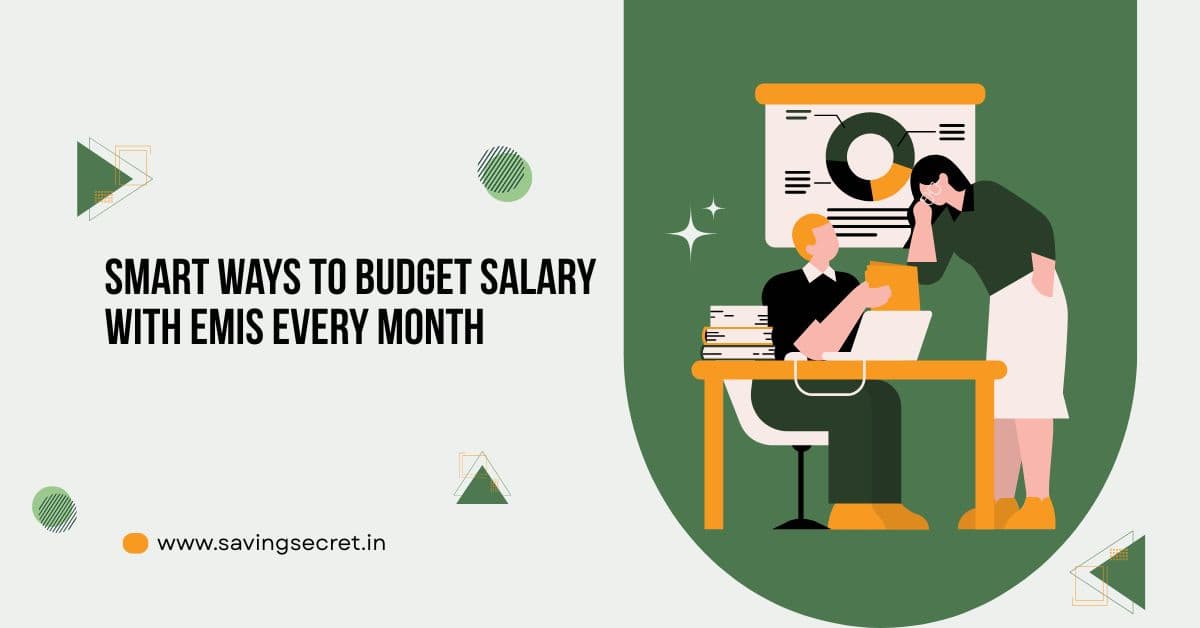Smart Ways to Budget Salary with EMIs Every Month: It’s not easy to manage a monthly pay cheque in India, particularly when Equated Monthly Instalments (EMIs) consume a large portion of your money. EMIs are a regular reality for millions of paid people, including teachers, government personnel, IT specialists, and private sector workers. They finance everything from homes and automobiles to appliances and education. With an estimated 100 million retail borrowers in India by 2025 (according to RBI forecasts) and ₹90 lakh crore in outstanding credit, loans have ingrained themselves firmly into the financial landscape. Yet, with inflation hanging around 5-6%, petrol prices nearing ₹100 per litre, and everyday costs like food and rent constantly growing, handling EMIs with daily expenses and savings might feel daunting. The answer? Smart budgeting is a methodical, planned technique to make sure your pay not only pays your EMIs but also provides space for savings, essentials, and a little fun.
We will discuss realistic, doable strategies for managing your salary with EMIs each month, tailored especially for Indian earners navigating particular economic and cultural pressures, regardless of your monthly income—whether it is ₹30,000 in a Tier-2 city like Patna, ₹50,000 in a busy metropolis like Pune, or ₹1 lakh in a pricey metropolis like Mumbai. These techniques will enable you to take charge of your money, from setting loan repayment priorities to creating an emergency fund and even budgeting for holiday indulgences. Let’s start today by exploring some clever strategies to make your pay work harder for you!
Why Indian Salaried Workers Must Budget Using EMIs
In India, a salaried person’s income frequently requires careful balance. Whether they are ₹5,000 for a two-wheeler loan, ₹15,000 for a home loan, or ₹20,000 for many obligations, EMIs—fixed monthly payments towards loans—are an unavoidable outflow. A ₹15,000 EMI takes up 30% of a person’s pre-tax salary of ₹50,000 per month, leaving just ₹35,000 for other expenses like rent, groceries, utilities, and savings. The stakes increase when you add in growing inflation, which reduces buying power by 5–6% a year on average (2025 forecasts). If there is no strategy in place, unforeseen costs, such as a ₹10,000 medical bill or a ₹5,000 holiday present, can ruin even the best of plans.
Effective EMI budgeting is essential since it:
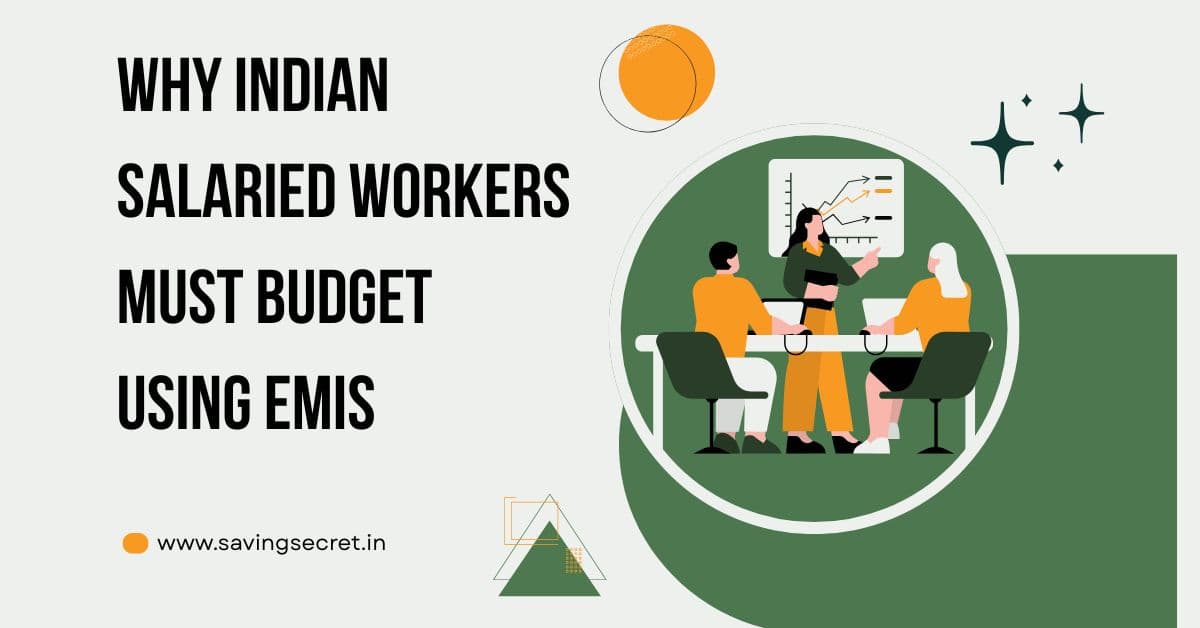
- Safeguards Loan Repayments: If you miss an EMI, you may be hit with late penalties (₹500–₹1,000) and have your CIBIL score lowered (10–50 points), which will increase the cost of future loans.
- Fulfils Basic Needs: makes sure loan payments don’t take precedence over expenses for things like rent, groceries, and bills.
- Encourages Savings: Over time, even modest contributions (₹1,000–₹2,000 each month) add up to substantial amounts.
- Reduces Financial Stress: The stress of living pay cheque to pay cheque is replaced by a well-defined strategy.
- Helps Achieve Life Goals: finances aspirations like as a comfortable retirement, a family vacation, or a child’s education.
- Avoiding Debt Spirals: prevents dependence on emergency loans (15–20%) or high-interest credit cards (36% APR).
Budgeting tools, including as online SIP platforms and expense-tracking applications, are now more accessible than ever thanks to India’s digital transformation, which saw 14.4 billion UPI transactions in February 2025. Even with EMIs in tow, you may utilise the appropriate tactics to make your wage a powerful tool. Let’s investigate how.
A Comprehensive Roadmap for Efficient Monthly Salary Budgeting with EMIs
This is your comprehensive guide to income budgeting with EMIs, complete with useful advice, real-world examples, and doable actions specifically designed for Indian salaried workers. Regardless of your income level, these ten clever strategies will help you manage your money.
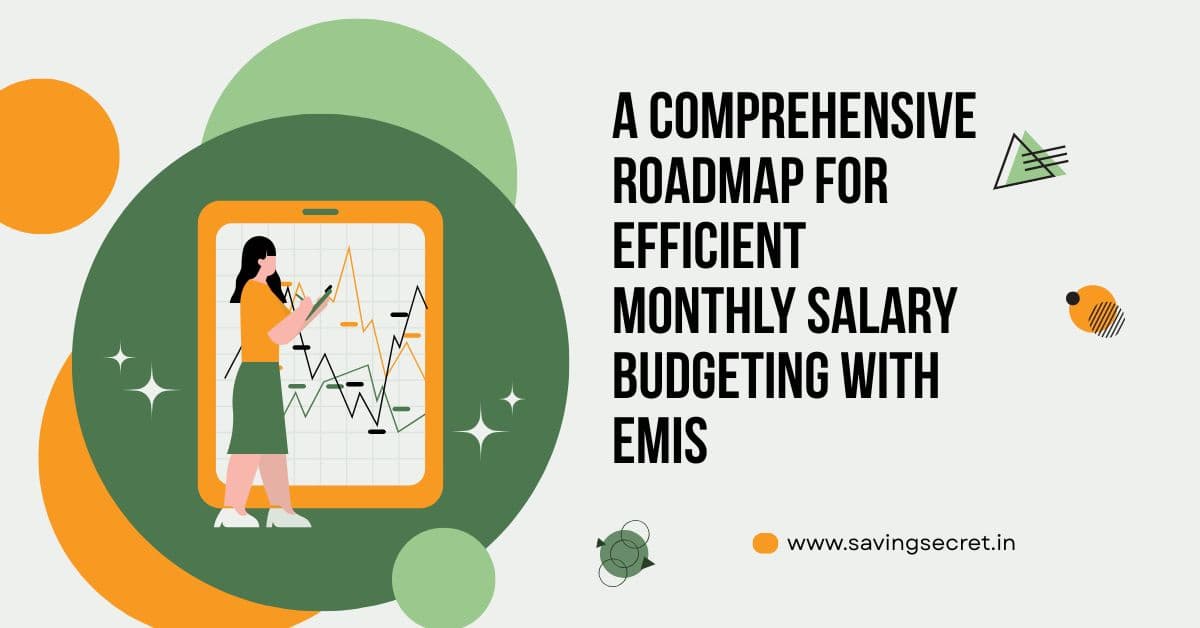
Method 1: Evaluate Your EMI Obligation Completely
- How to Proceed: Enumerate each EMI, including the loan type, amount, interest rate, and term (e.g., ₹5,000 personal loan at 14%, 3 years; ₹10,000 house loan at 8.5%, 10 years).
- Why It Is Important: The foundation of budgeting is knowing your set outflows. All other options are influenced by the ₹35,000 that remains after a ₹15,000 total EMI on a ₹50,000 wage.
- In-depth: Verify whether your EMIs above 40% of your income, as this is a warning sign. For example, ₹20,000 on ₹50,000 (40%) is doable, while ₹25,000 (50%) indicates going beyond.
- For instance, Ravi makes ₹40,000, of which ₹28,000 remains after 30% is deducted from his ₹12,000 EMI (vehicle loan).
- Take action: Determine your EMI-to-income ratio by pulling loan statements by April 5, 2025.
Method 2: Use the 50-20-20-10 Framework for Budgeting
How to Proceed: Divide your pay after taxes (for example, ₹48,000 on ₹50,000):
- 50% of needs (rent, groceries, utilities, and transportation) are 24,000.
- 20% EMIs (loan repayments): ₹9,600.
- 20% savings (investments, emergency fund): ₹9,600.
- 10% Wants: ₹4,800 (personal expenses, entertainment, and food).
The Reason It Works: This modification to the 50-30-20 rule gives EMIs priority as a separate category, guaranteeing their coverage while striking a balance between necessities and future security.
Customisation: Reduce “wants” to 5% (₹2,400) and change savings to 15% (₹7,200) if EMIs above 20% (for example, ₹15,000 on ₹50,000 = 30%).
For instance, Neha’s ₹60,000 salary is divided as follows: ₹6,000 for desires, ₹12,000 for EMIs, ₹12,000 for savings, and ₹30,000 for requirements.
Take action: By April 10, 2025, draft your budget split and test it for a month.
Method 3: Pay EMIs on Salary Day
- How to Proceed: Plan your EMI deductions for the first or fifth, immediately after your pay credits.
- Why It Is Important: When you pay first, you avoid overspending since a ₹15,000 EMI on a ₹50,000 wage leaves ₹35,000, which forces you to be disciplined. Late payments damage CIBIL and result in penalty of ₹500.
- Deep Dive: Consistency is ensured by automating through net banking or ECS. Your score might decline by 20 points if you miss even one EMI, which would increase your future loan rates by 1% to 2%.
- For instance, Sanjay’s ₹20,000 income is left over after his ₹10,000 EMI auto-debits on the second.
- Take action: By April 15, 2025, set up auto-debit with your bank.
Method 4: Control Housing Expenses
- How to Proceed: Limit housing or rent expenses to 20–25% of your pay (for example, ₹10,000–₹12,500 on ₹50,000).
- Why It Is Important: 60% of ₹50,000 is consumed by high rent (₹15,000) and EMIs (₹15,000), leaving little money for other necessities.
- Hacks: Live in a PG, share a flat (6,000 vs. 10,000), or bargain with landlords (500/month off).
- For instance, Priya pays ₹18,000 (36% of ₹50,000) in rent (₹8,000) plus ₹10,000 in EMIs.
- Take action: By April 20, 2025, find reasonably priced accommodation or renegotiate your rent.
Method 5: Reduce Food and Utility Expenses
- How to Proceed: Set aside 1,500 to 2,500 for utilities (gas, water, electricity and internet) and 5,000 to 7,000 for food.
- Why It Is Important: Food and expenses must fit in the remaining ₹25,000 after ₹15,000 in EMIs and ₹10,000 in rent on ₹50,000.
- Hacks: Use LED lights (saving ₹200/month), buy bulk commodities (rice for ₹50/kg), cook at home (saving ₹50/meal compared to ₹150 out), and recharge prepaid cell-phone (saving ₹199 compared to ₹399).
- For instance, ₹17,000 is left over after ₹35,000 after Anil’s ₹6,000 groceries and ₹2,000 in utilities equal ₹8,000.
- By April 25, 2025, take action by organising meals and converting to more affordable utilities.
Method 6: Reduce Transportation Costs
- How to Proceed: Set aside 1,000 to 2,500 each month for transportation.
- Why It Is Important: Your post-EMI budget (e.g., 35,000 to 32,000) is reduced by high transportation charges (3,000).
- Tips: Take public transit (500 naira bus pass), carpool (share 1,000 naira), ride a bike for short distances (50 naira per day) or walk for free.
- For instance, Sunita saves ₹1,500 per month by using a ₹1,000 bus pass instead of a ₹2,500 vehicle pass.
- Take action: By April 30, 2025, switch to a less expensive setting and monitor the savings.
Method 7: Establish an Emergency Fund That Is EMI-Safe
- How to Proceed: Save three to six months’ worth of EMIs plus expenditures (for example, ₹90,000 for ₹15,000 in EMIs on a salary of ₹50,000).
- Why It Is Important: Your credit will be protected since EMI payments won’t be stopped by exigencies (like a ₹20,000 medical bill) or job loss.
- How: Put ₹1,000–₹3,000 each month into a liquid fund (6-7%) or savings account (4%) to start.
- For instance, if Ravi saves ₹2,000 a month, ₹24,000 in a year will cover two months’ worth of EMIs.
- Take action: By May 5, 2025, open a different account and save ₹1,000.
Method 8: Make Small Investments After EMIs
- How to Proceed: Invest ₹1,000–₹3,000 each month in SIPs (such as the Nifty 50 index fund, which yields returns of 10–12%).
- Why It Is Important: Wealth is increased by post-EMI savings: ₹2,000 per month at 12% for 15 years equals ₹10 lakh.
- Deep Dive: Low-risk funds create a buffer for the future by outperforming FDs (5-7%) and inflation (5-6%).
- For instance, Neha’s ₹2,000 SIP on a ₹50,000 income increases to ₹5 lakh over a ten-year period.
- Take action: By May 10, 2025, begin a SIP on Groww or Zerodha.
Method 9: Manage Your Lifestyle and “Wants” Expenditures
- How to Proceed: Keep monthly spending on meals, OTT, and shopping to ₹3,000 to ₹5,000.
- Why It Is Important: Spending too much (₹8,000) reduces savings or puts the ₹35,000 post-EMI budget at danger of EMI defaults.
- Hacks: Eat out once (₹500), share Netflix (₹200 vs. ₹500), and shop deals (₹1,000 vs. ₹2,000).
- For instance, Sanjay’s ₹4,000 “wants” compared to ₹6,000 saves ₹2,000 each month.
- Action: Use PhonePe to track and set a ₹4,000 limit by May 15, 2025.
Method 10: Examine Loans and Make Strategic Prepayments
- How to Proceed: Review loan status every year; prepay principal with savings or bonuses (₹20,000).
- Why It Is Important: Prepaying ₹50,000 on a ₹5 lakh loan at 12% interest for five years reduces the EMI or duration and saves ₹37,500 in interest.
- Deep Dive: For maximum savings, concentrate on high-interest loans (e.g., 14% personal vs. 8% house).
- For instance, after making a ₹50,000 prepayment, Priya’s ₹15,000 EMI falls to ₹12.
- Take action: by arranging a ₹10,000 down payment by December 2025 and reviewing it in May 2026.
Examples of EMI-based budgets
Salary: ₹30,000;
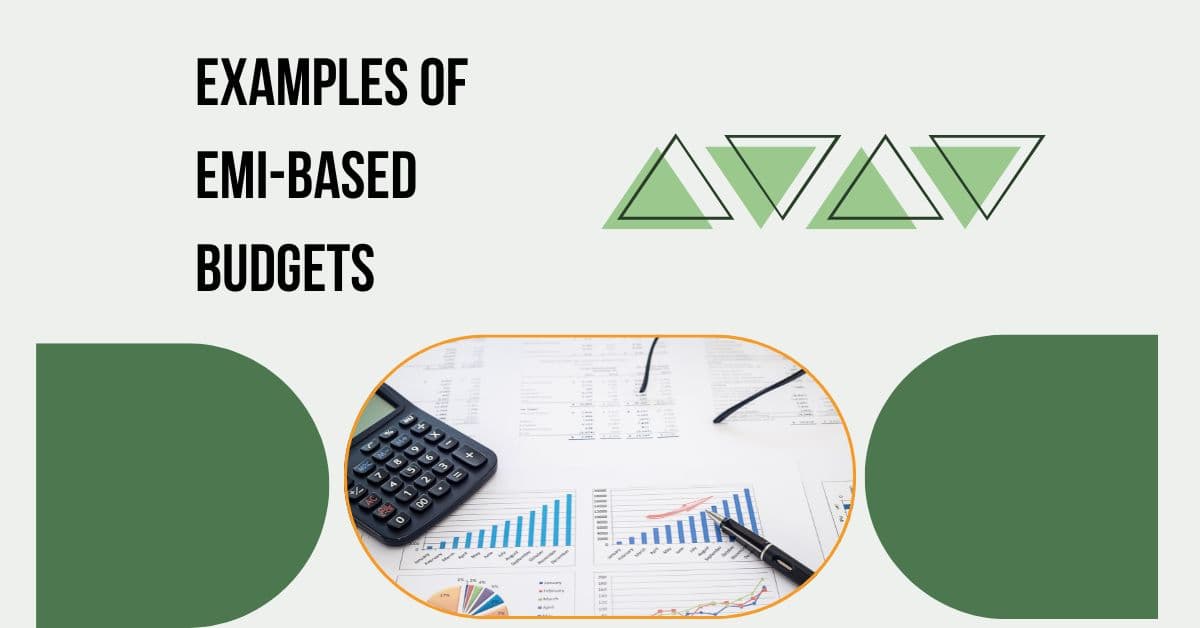
- post-tax income: ₹29,000.
- 20% EMIs: ₹5,800 for a personal loan.
- 50% of 14,500 is needed (7,000 for rent, 4,000 for food, 1,500 for utilities, and 2,000 for transportation).
- Savings (20%): ₹5,800 (buffer of ₹1,800, ₹2,000 for emergencies, and ₹2,000 for SIP).
- Desires (10%): ₹2,900 (personal, entertainment).
Salary: ₹50,000;
- post-tax income: ₹48,000.
- EMIs (20%): ₹9,600 (₹3,600 for a car, ₹6,000 for a house).
- 24,000 is needed (50%) (10,000 for rent, 6,000 for food, 2,000 for utilities, 1,500 for
- transportation, 4,500 for miscellaneous).
- ₹9,600 in savings (20%) (₹3,600 buffer, ₹3,000 SIP, and ₹3,000 emergency).
- Desires (10%): ₹4,800 (personal, entertainment).
The advantages of using EMIs
- Budgeting Assurance: Your credit score (750+) is protected by on-time payments.
- Financial Growth: ₹10 lakh in 15 years, or ₹3,000 per month at 10%.
- Debt Freedom: Interest is saved and loan life is shortened by repayments.
- Balanced Living: Having fun within budget.
- Being ready: Unexpected expenses are covered by emergency reserves.
Examples from Real Life
Priya’s Mastery of Home Loans
Priya, a 34-year-old Chennai clerk earning ₹50,000 per month:
- EMI for the house loan: ₹15,000.
- Needs: ₹20,000 for bills, food, and rent.
- Savings: ₹5,000 every month, with ₹60,000 saved for emergencies in a year.
- Desires: ₹3,000 for family excursions.
- “My EMI is less stressful because of budgeting,” she explains.
Anil’s Auto Loan Amount
Anil, a 29-year-old Delhi-based educator who makes ₹40,000 per month:
- EMI: 8,000 naira (auto loan).
- 18,000 is needed for PG, food, and transportation.
- Savings: ₹1 lakh in three years—₹3,000 SIP.
- Desires: 2,000 for clothing and movies.
- Anil says, “I drive and save.”
Sunita’s Double EMI Victory
Pune manager Sunita, 40, makes ₹60,000 a month:
- EMI: ₹20,000 (personal + house).
- ₹25,000 is needed for family and expenses.
- Savings: ₹5,000 per month for two years, or ₹1.2 lakh.
- Wants: ₹4,000 for eating and self-care.
- “My superpower is smart budgeting,” she says.
Additional Smart Budgeting Advice for EMIs
- EMI First: Automate debt repayment before spending.
- Reduce rent or expenses by ₹500 per month or ₹6,000 year by negotiating.
- Purchase food in bulk to save money (e.g., ₹50/kg dal vs. ₹60).
- A side business: Make between ₹2,000 and ₹5,000 per month via coaching or freelancing.
- Digital Tools: ClearTax for tax savings, Walnut for spending.
- Celebrate by setting aside ₹500 every month for Diwali and ₹4,000 by November.
- Find Out More: Look for hacks on YouTube (e.g., Labour Law Advisor).
- Refinance: Save ₹1,000 per month by lowering EMI rates from 12% to 10%.
Typical Problems and Their Solutions
- Problem: High EMI ratio (over 40% of pay) is a challenge.
Solution: Reduce monthly expenses by ₹2,000 by refinancing or prepaying; reduce “wants.” - Problem: After EMIs, there are no savings.
Solution: Start with ₹500 SIPs and cut eating by ₹1,000. - Problem: Unexpected costs (₹10,000 for repairs).
Solution: Use an emergency fund and create a ₹2,000 miscellaneous cushion. - Problem: After increases, lifestyle creep.
Solution: Fix “wants” at ₹5,000 and save more. - Problem: The possibility of EMI defaults is the challenge.
Solution: Prioritise and save ₹45,000 for three months’ worth of EMIs.
Why EMI-Based Budgeting Is Successful in India
The 400 million paid workers in India rely on loans for expensive things like houses, vehicles, and schooling. Although EMIs are common, they may be controlled with careful budgeting:
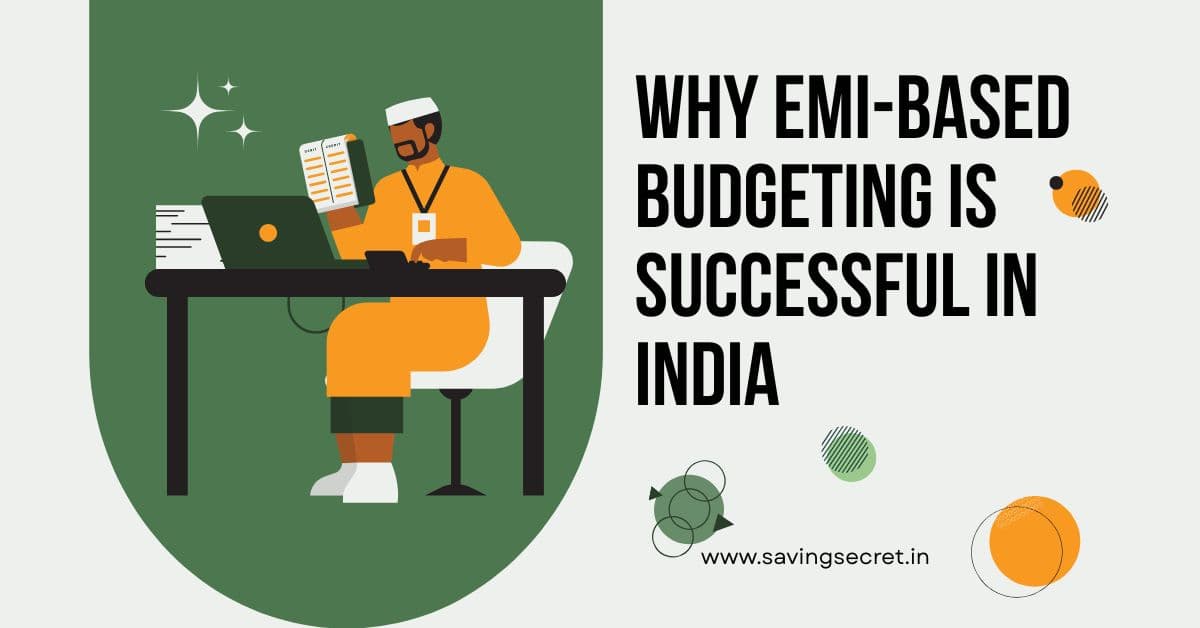
- Digital Edge: Tracking and payments are made easier with UPI and apps.
- Economic Push: Efficiency is required due to rising expenses (₹5,000 for food).
- Future Goals: Little investments made now will pay out handsomely in the future.
Resources and Tools
- Apps: Groww (SIPs), Splitwise (shared charges), and PhonePe (tracking).
- Websites: AMFI (funds), RBI (loan information), and Moneycontrol (advice).
- Freebies include YouTube budgeting tutorials and Google Sheets templates.
- Communities: r/IndiaInvestments for guidance, WhatsApp groups.
Use EMIs to begin budgeting right now
Today, take charge of your pay:
- By April 5, 2025, list EMIs.
- You have until April 15, 2025, to draft your budget.
- Before April 30, 2025, save ₹1,000.
Smart budgeting owns you, not EMIs. Distribute this guidance to family members or co-workers who are managing debt. Every paid Indian may become a financial guru by using these strategies!
Smart Budgeting for Women: Take Control of Your Finances
30-Days Rule in Budgeting: The Secret to Smart Spending in India!

